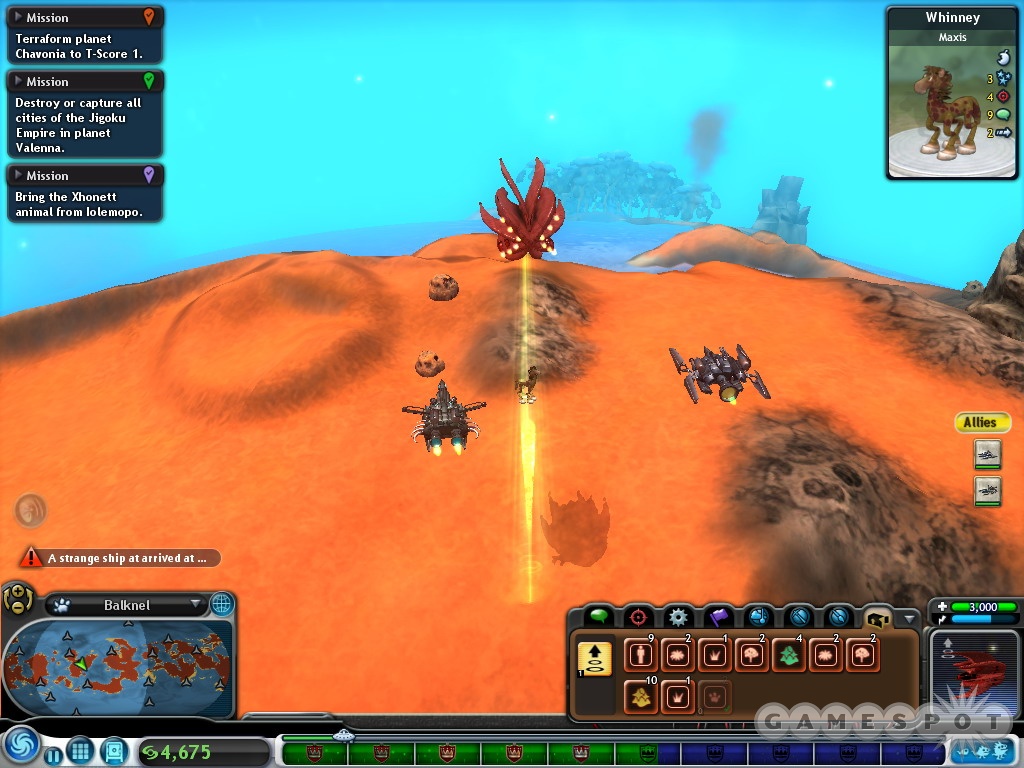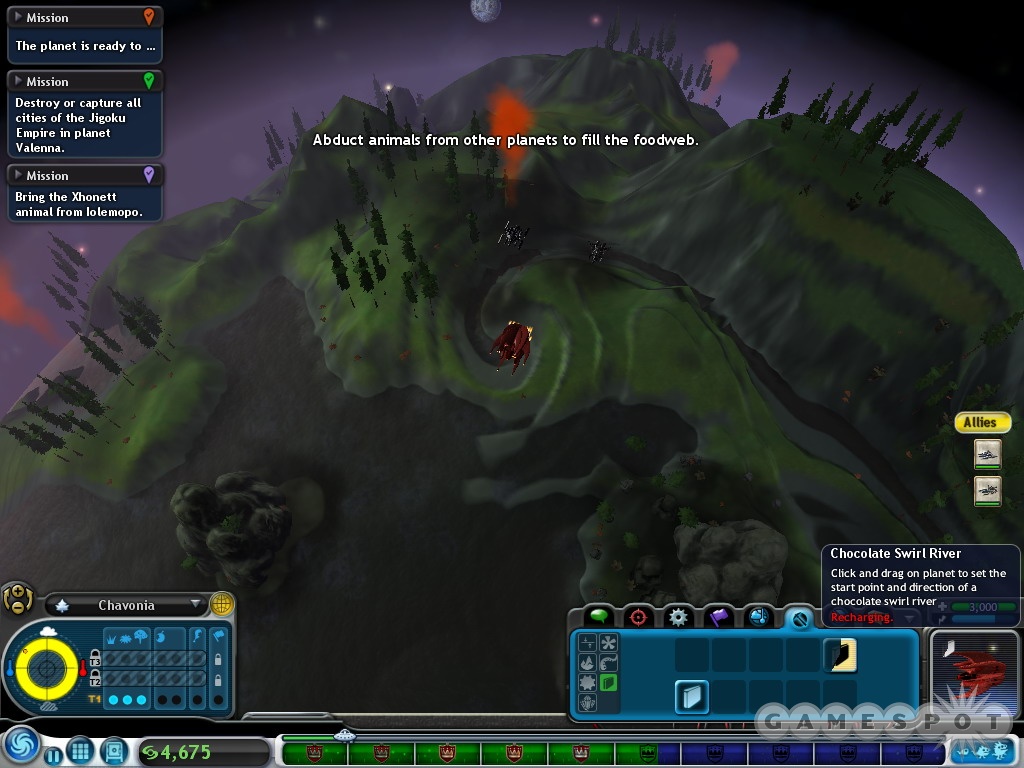From Spore to Space: Shape Your Galaxy
First customize your spaceship, then customize entire worlds.
Spore-crazed North Americans still have a few days before they can finally create their carnivorous cell hell-bent on galactic domination, so we thought we'd delve even deeper into the strategy game from the mind of Will Wright before its release date. After having detailed each customization tool in depth, we wanted to break down the final customization tools in Spore: terraforming.
Terraforming is the science of shaping a barren planet so that it can support life. In Spore, there are many facets of terraforming; some are simply for fun, but most are crucial to providing a safe habitat in which your colonies can flourish. Each planet has a terraforming rating called a TScore. A TScore of 0 is inhospitable, and colonies there will need a dome to support life. Its population and production are also severely limited. A T1 planet can support very basic life forms, a T2 planet supports even larger life forms, and a T3 planet flourishes with a vibrant ecosystem.
As you explore the planets in Spore, you'll notice a globe that shows off the planet's TScore. The TScore is determined by atmosphere and temperature, with a T3 planet being the most balanced. If you wish to colonize a T0 planet with a very dense atmosphere and freezing temperatures, you'll need to utilize tools, such as a meteor shower to increase the temperature, as well as a drought creator to reduce atmosphere levels. Conversely, a hot planet with light atmosphere will need an ice storm to cool off the temperature and an atmosphere generator that will increase cloud cover.
Once you utilize these tools, you'll see the planet slowly change in appearance. But these tools only produce temporary changes, and a T0 planet that improves to T1 will eventually return to T0 unless you stabilize the atmosphere. To do so, you'll need to import plants and animals from T1 planets using your handy abduction beam. You repeat this process over time to create a flourishing T3 world that can support two of your colonies and produce the galaxy's most valuable resource: delicious spice.
Making planets habitable is only one facet of terraforming, however. In Spore, you can truly play god and make planets in your own image. You use a number of planet sculpting and painting tools that you will discover throughout the galaxy. Basic terra tools allow you to create mountains and craters or flatten the contours of a planet. There are plenty of fun tools as well that let you create tentacle-shaped mountains, seas of pure crystal, and, oh yes, rivers of swirling chocolate.

Finally, you can interact with primitive cultures still in creature and tribal stages so they will worship you as gods. You can drop monoliths or carve crop circles on their underdeveloped planets and create instant allies, although it remains to be seen if they can help you with your booming spice trade. Be sure to check out Spore when it is released on September 7.
Got a news tip or want to contact us directly? Email news@gamespot.com

Join the conversation